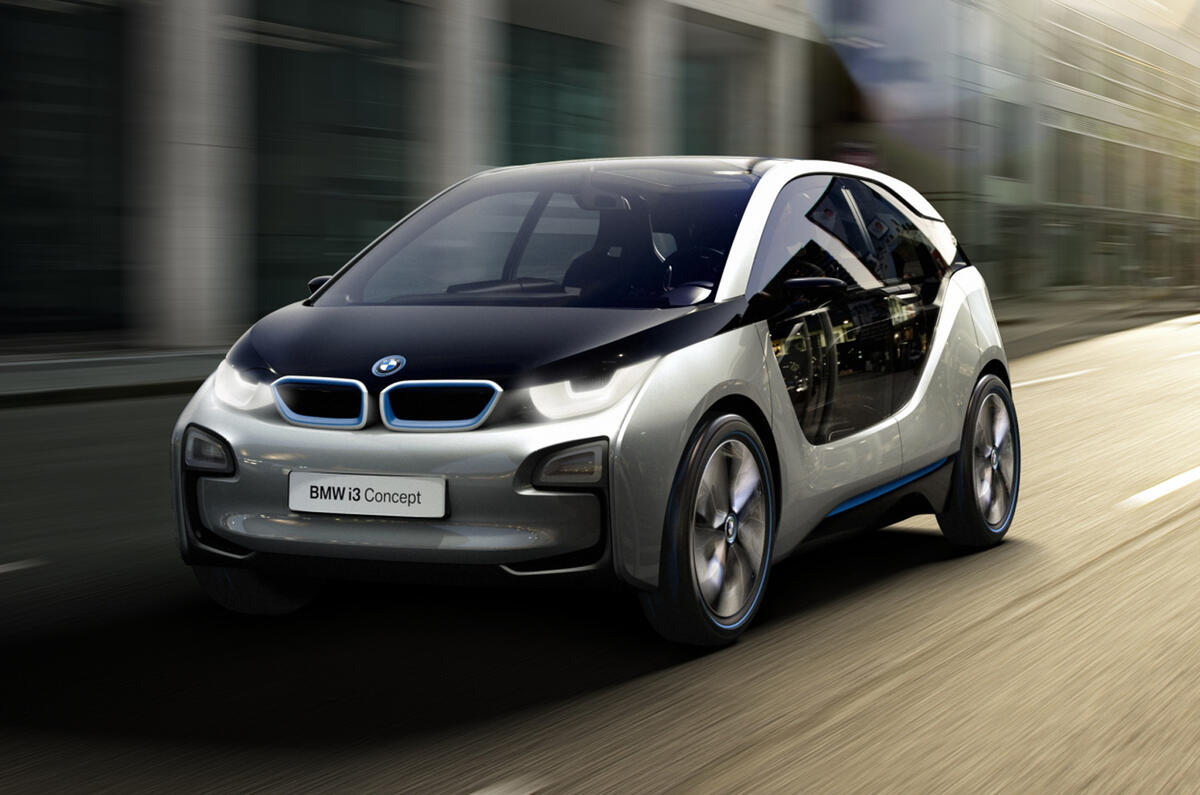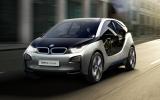The BMW i3 has been officially displayed at Frankfurt motor show today. BMW will give its new range of i-cars broad appeal with the launch of the cheaper and more practical BMW i3, which Munich insiders claim will be comparable in price to more powerful versions of today’s 1-series.
Set to launch in 2013, the BMW i8’s urban-orientated sister car will be offered with standard plug-in electric or optional range extender-assisted, electric-drive powertrains.
Read about the BMW i8 super-coupé
The i3, previously known as Megacity Vehicle, eschews the traditional low-slung lines of contemporary BMW small cars for a distinctly more upright stance aimed at providing the i3’s four adult occupants with excellent all-round visibility. There is a nominal 200 litres of luggage space behind the rear seats.
As with the i8, the i3 is based around a light but highly resilient CFRP (carbonfibre reinforced plastic) body structure and rides on a predominantly aluminium chassis. BMW claims the production version will weigh 1270kg – some 265kg above the more conventionally constructed Mini One.
At 3845mm in length, 2011mm in width and 1537mm in height, the five-door i3 is 120mm longer, 326mm wider and 132mm higher than the Mini One. It rides on a platform boasting a 105mm longer wheelbase at 2570mm and wider tracks. Therefore the i3 has a larger footprint than its Mini stablemate, yet it’s still smaller than any existing BMW model.
BMW claims the i3 boasts a “comparatively small turning circle” and keenly describes its handling as being “agile at typical city speeds”, both in keeping with its urban driving brief.
By mounting the new car’s liquid-cooled battery - a lithium-ion unit of unspecified weight and capacity - within the central section of the floor, BMW claims the i3’s centre of gravity is lower than all current 1-series models.
Unlike the petrol-electric, hybrid-powered BMW i8, the i3 relies on a pure electric driveline currently undergoing durability testing in a fleet of 1-series Active-E prototypes.
At the heart of the new plug-in system is a compact electric motor mounted over the rear axle. It draws energy from the battery to provide drive to the rear wheels via a single-speed transmission.
Development of the i3 kicked off in 2009 when trials of the Mini E (a testbed for the i3) began. The size of the electric motor has been reduced by 40 per cent since trials started and the trials have allowed the mounting of the i3’s drive unit – motor, power electrics, transmission and differential – to not impact on the interior.
























Add your comment